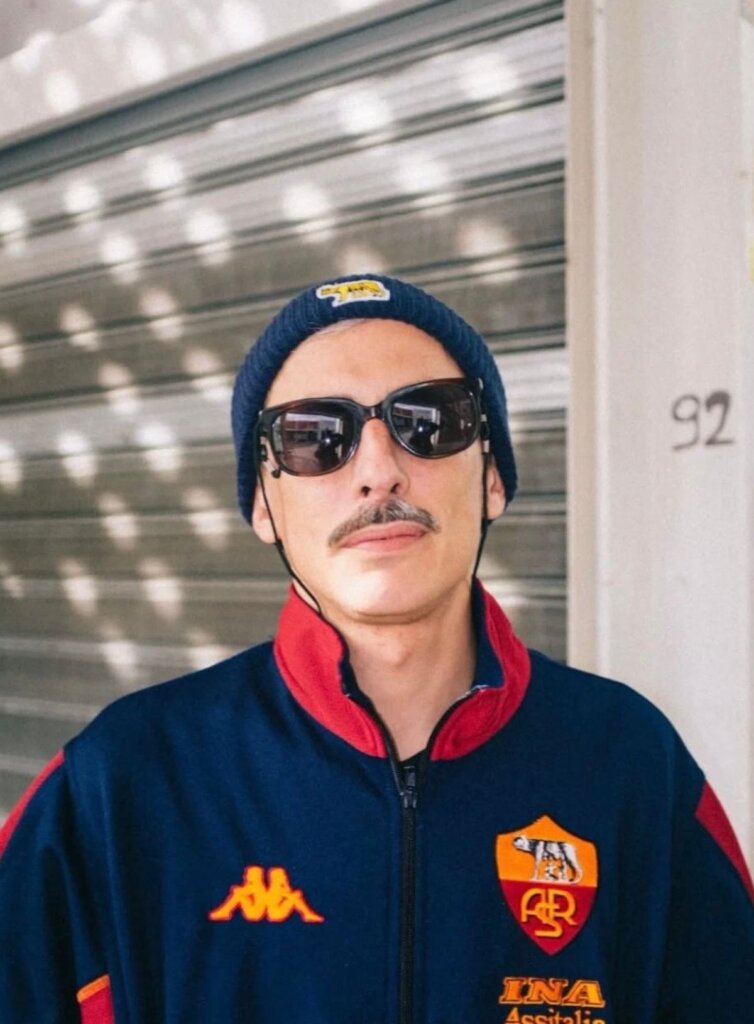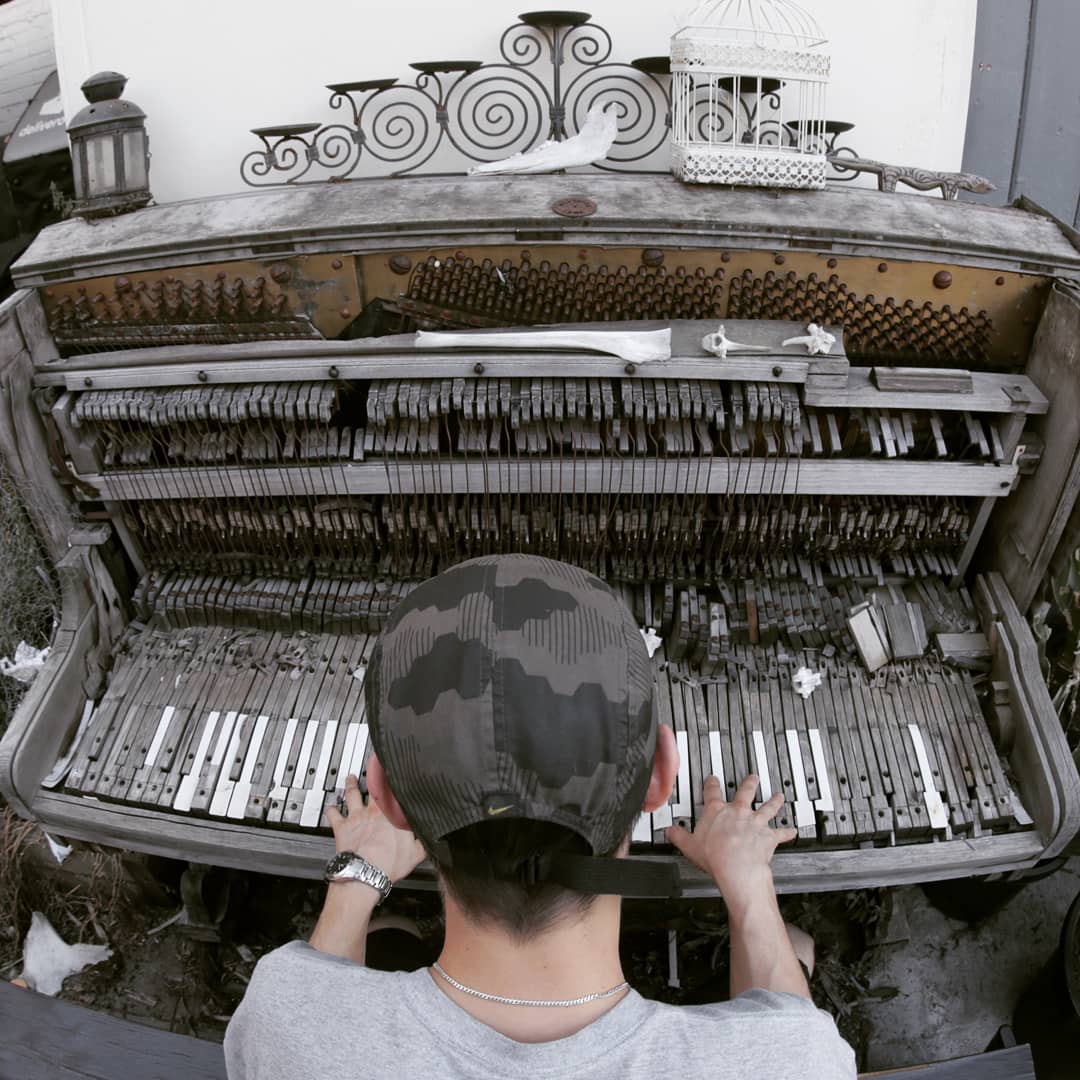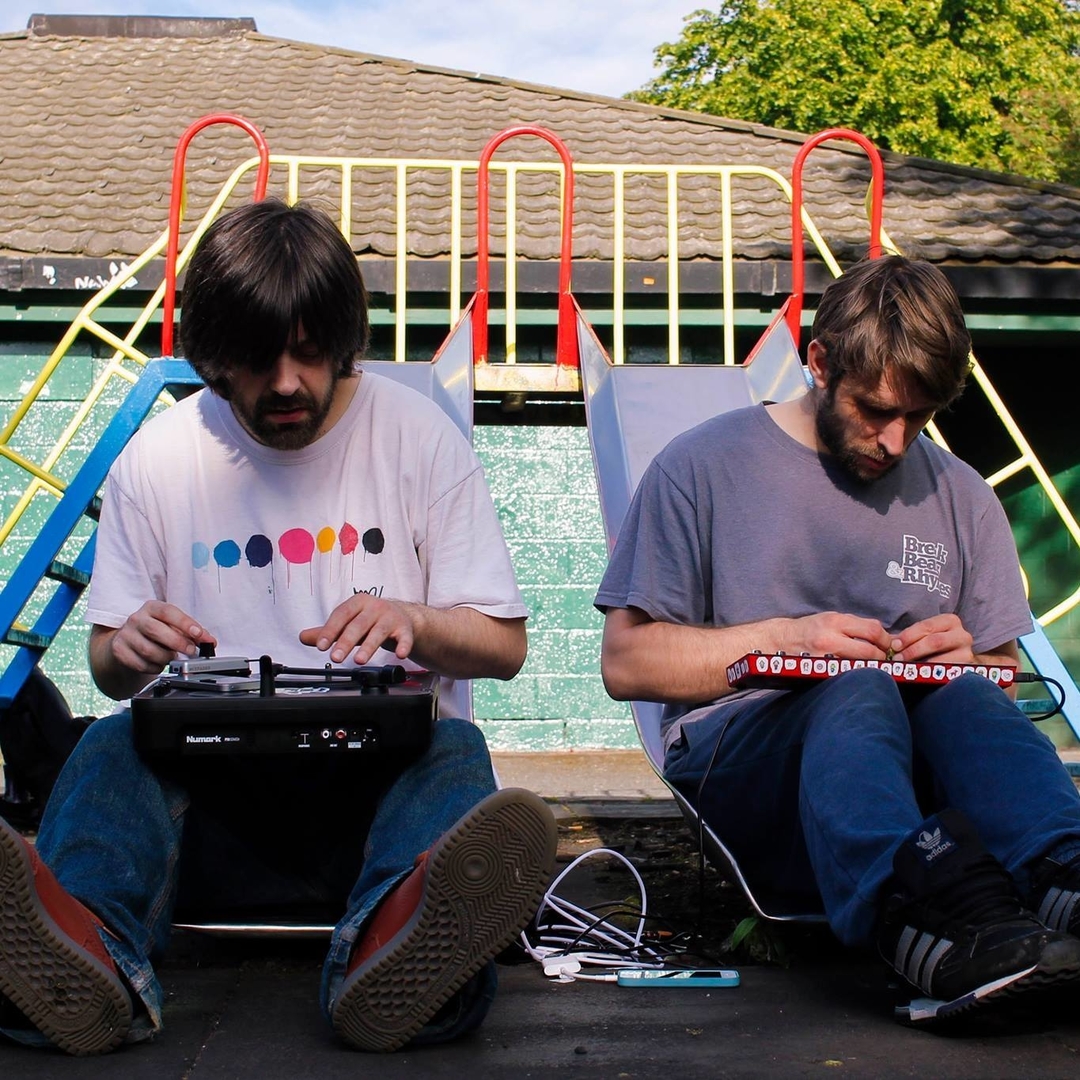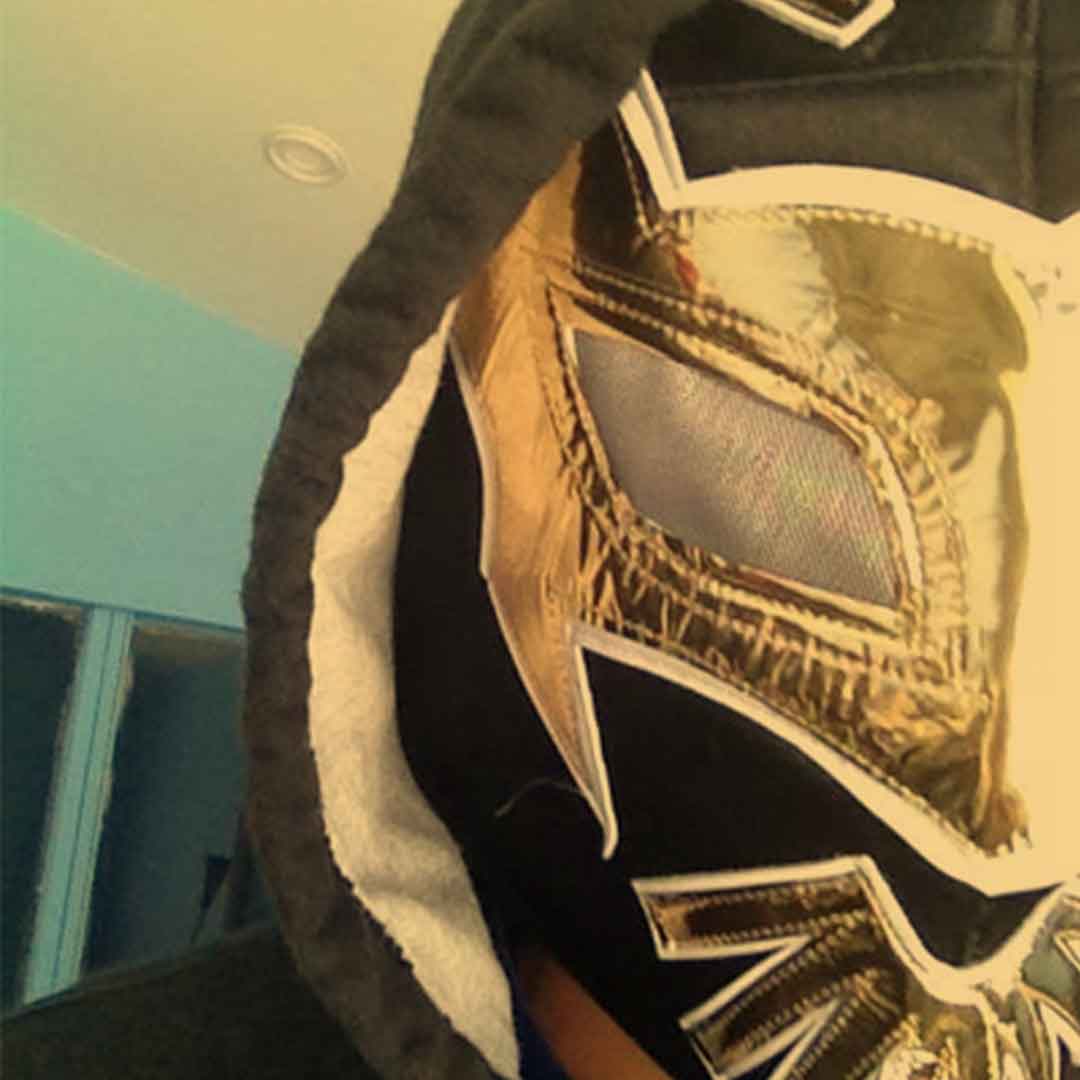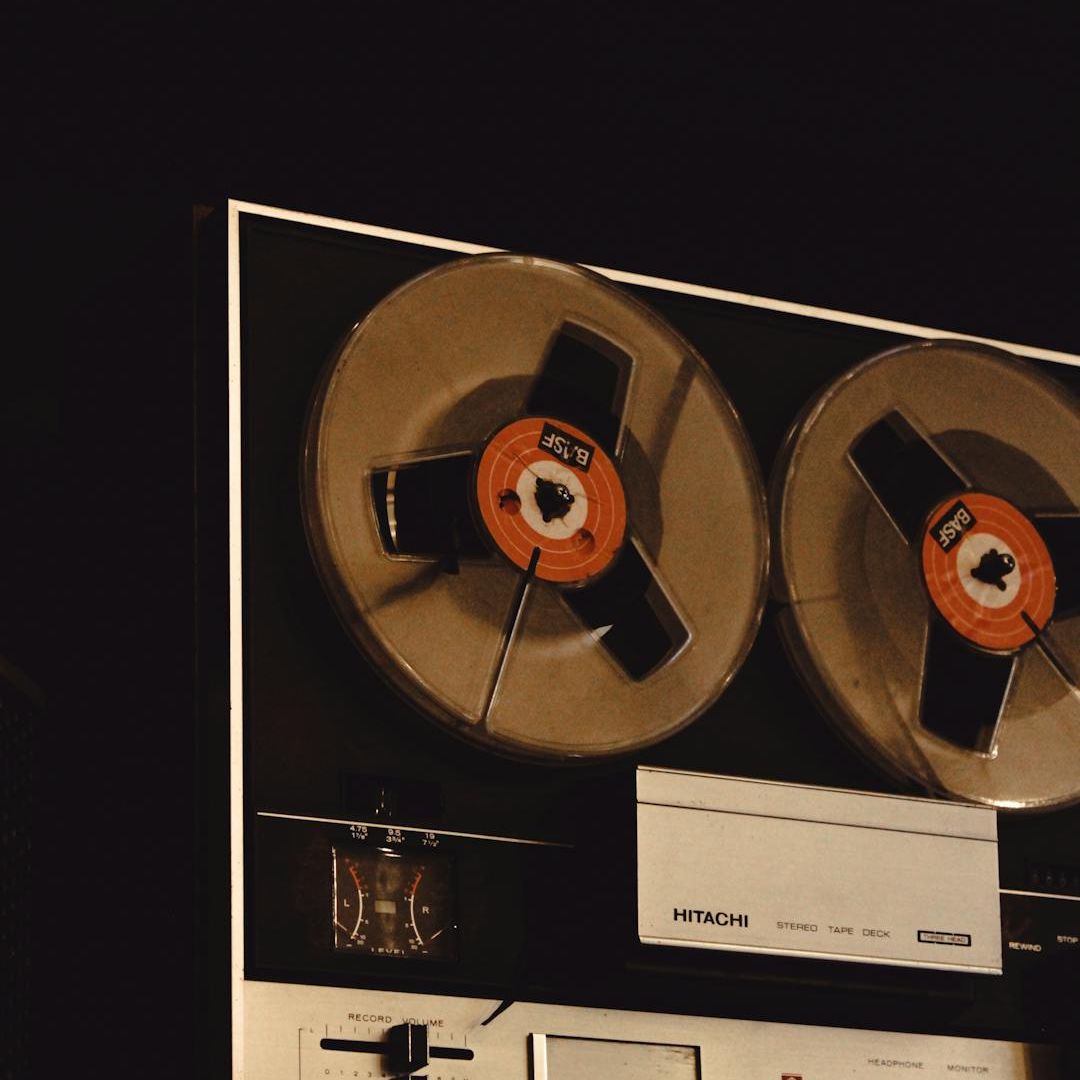The groove rarely falls by accident.
Some producers build empires. Valerio Delphi builds parallel universes—one slice at a time—with an MPC on his lap and a Bollywood record found for a couple of rupees from a guy who didn’t speak a word of English.
DJ, producer, and archivist of imperfect sound, half of the spaceship called Tiger & Woods, Delphi grew up in Rome, surrounded by tiny back rooms for fourteen-year-olds, 5,000-lire entry fees, and vinyl devoured through good headphones.
An exclusive interview about beats, touring the world and a lazy mother.
In this exclusive interview, he lays it all out: how to flip an Ann Pebbles sample without getting lost in nerd traps; what it means to tour the world with Marco Passarani while sleeping little and driving a lot; why the record you dig matters more than the beat; and how it feels to make a living from music without becoming a superstar.
He talks about Rome, too—his distracted mother, always there—his setup, and his approach: artisanal, naïve, and absolutely personal.
There’s no storytelling here, just an emotional grammar made of groove, silence, and beautifully wrong reverbs. A sound that doesn’t need to change personality to be true. Sometimes, all it takes is a snare hit placed exactly where you don’t expect it.
Read on. It’s a trip: into the sound, into Delphi’s head, and into Rome—the real one, with Morricone’s whistle and the cicadas from Bianco, Rosso e Verdone.
Welcome to Delphi’s world.
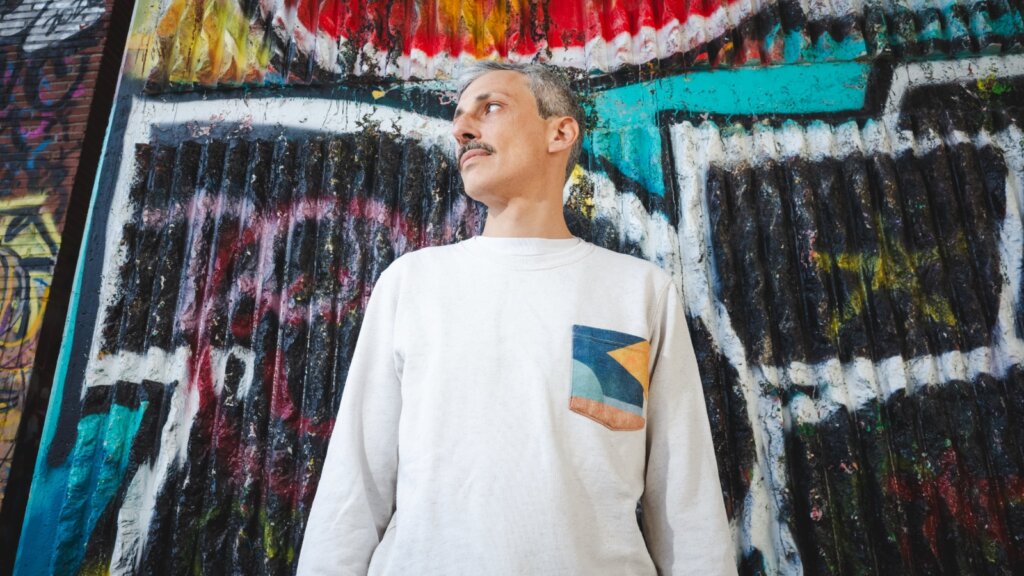
The beginning of the journey: a young deejay in a small club
Welcome to StrettoBlaster, Valerio…the tape is already rolling, so…let’s start easy…Introduce yourself for those who don’t know you. Who is Delphi?
My name is Valerio Delprete, aka Delphi. I started as a DJ, and that’s where it all started. The desire to make those records was born from the act of making records. That’s how I started producing. I played solo and in a duo with Marco Passarani in the Tiger & Woods project, which literally absorbed me for almost twenty years.
When did you start spinning records?
I started when I wasn’t even 14: I was fascinated by the idea of playing records. It was a time when so many people were getting into DJing: among my friends, 80% tried it—some for 25 days, some for two years, some still do it today.
Are we talking about the late ’80s, early ’90s?
Later. I was born in ’83: for me, we’re talking about the second half of the late ’90s. FF: And what was Rome like in those years? VD: It’s a strange city: perhaps less happens than it should, given its size. It lives in waves, in phases.
My Rome, in the early 2000s—when this became a real activity—was quite vibrant: there were nights, situations, clubs. The city influenced everything and everyone, from hip-hop producers to the techno of Marco (Passarani) and Lory D.
On a personal level, I played on Saturday afternoons in clubs for people my own age: Coca-Cola at the bar, 5,000 liras entry. I’d end up in the back room because what I played wasn’t right for the big room. And then, if you look closely, it was the coolest stuff…
And what did you play in the small ballroom?
I started with house music; it was what I felt closest to. I don’t come from a “musical” family: no inherited collections, no special listening, zero. Up until that point, only mainstream radio. House music, at that time, overlapped with what was playing on the radio, but you could also listen to more underground programs. In Rome, there was Radio Centro Suono, where you could listen to different records.
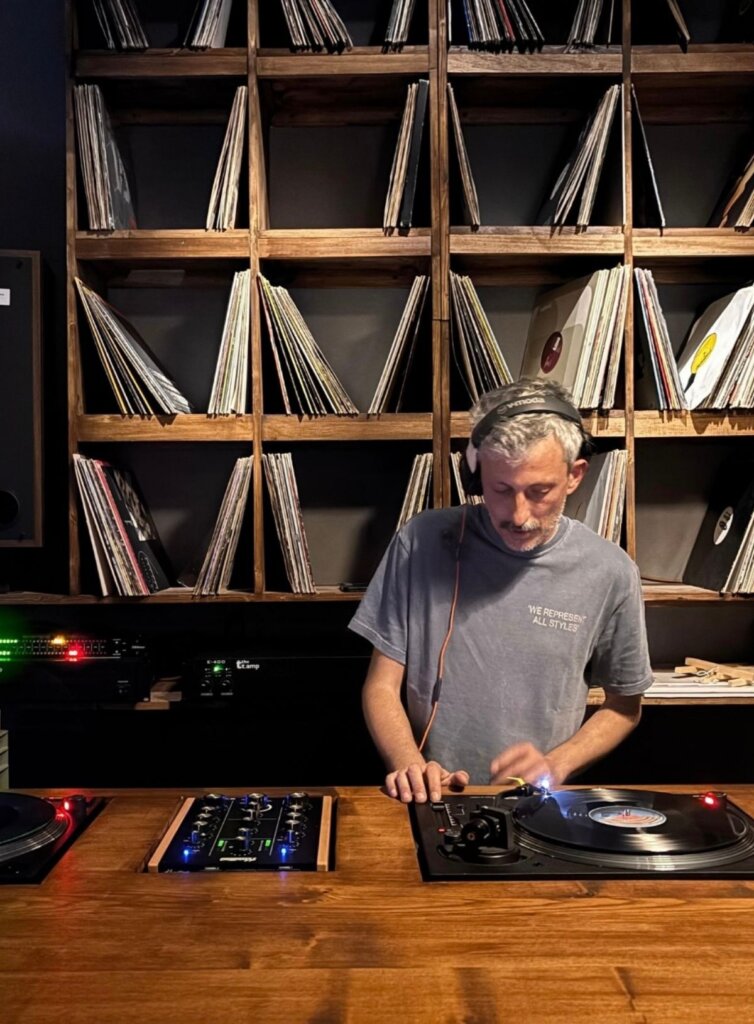
Discovering music production: beats, influences, gear
What about production, on the other hand? How did it all begin?
On the production side, the first thing I approached was dance music: I wanted to emulate what I was listening to. My generation is more connected to computers than to machines: they were expensive and inaccessible. So I started with computers, then—as I grew passionate about it—the hip-hop component entered the picture.
The first “mental” instrument I approached was the sampler. I’ve always looked for the all-in-one solution: a sampler or a groovebox. The idea was: “I’ll buy the MPC, put it on my lap or on my desk, and do everything right there.” A synth is beautiful, but it’s complementary. A groovebox/sampler gives you the magic of crafting a piece from start to finish without leaving the machine.
At the same time, I started buying records, delving back into the roots of what I liked. Then came the sampler, along came sampling—and that thing lodged itself in my brain and stayed there. Even today, I search for records and sounds I’ve never heard before that turn the beat on its head.
How would you describe your approach to machines?
I’d call it innocent. I don’t have the overarching structure of a beat nerd: I approach the material with openness and musicality. I end up flipping samples that a “veteran” wouldn’t touch, and I give them a fresh take. And whether it’s a dance track or a hip-hop beat, almost only the BPM changes these days: it’s the same approach.
Do you have a particular workflow when producing?
My “beat” workflow has always been artisanal and free: I turn on the sampler, lay down a drum loop, listen to records until a sample speaks to me, and then I chop it. Often the beat was left unfinished and ended up on the hard drive: the dance part—the part that got me working and touring—absorbed the rest. Hip hop remained my safe zone: a pure and “naive” place.
In several interviews, you’ve often cited J Dilla and Flying Lotus as major influences…
Dilla is drums and groove: the placement of the elements in the piece, that unrepeatable fluidity that makes you listen to it over and over again. All it takes is three elements placed in the right place.
FlyLo came a little later. The Rush Hour compilation, Beat Dimension Vol. 1, captured a whole post-Dilla moment for me. There, you discover artists who add texture and electronics; I’m also thinking of FlyLo’s album on Plug Research. And then the SP community (404/303/202): entry-level instruments pushed to the limits, with tricks and shortcuts that made them iconic.
When was your first beat?
I made my first “real” beat in London, on an MPC 2000XL (I was coming from the 1000). I consider that the first “done and finished”: that’s when I understood “this is how it’s done.” I don’t think it ever came out.
How does one of your compositions come about? Do you have a particular process?
It depends on the gear of the day. Sometimes I say: “Today SP-202.” The machine takes you in a direction. Basically, I write a short but meaningful drum loop, let it run while I do something else, and listen to records over that loop. When a chop has a certain flavour, I start working the drums and the sample altogether, until I’m satisfied with the beat and the magic is done.
Speaking of gear—do you have a preferred setup?
Ableton Live is essential. Off the computer, it’s the SP‑404MKII. I’ve got lots of cheap samplers, each with its own character: the 202 for pitching samples, the 303 for glueing them with the VinylSim. I use them almost like pedals: as sequencers, they’re limited; their strength is in the texture they give you.
How would you describe your sound in three words?
Photographic, dusty, glued. I’d call it photographic sampledelia. Think of my work for the Italian label Quattro Bambole: sonic photographs, more descriptive than hip‑hop beats—almost soundtracks. The crackle or the frog on the vinyl aren’t accidents: they’re sought out to capture a vibe and a specific grain.
The life of Tiger&Woods: from zero to touring the world
Beyond your work as an ‘innocent’ hip‑hop producer, you’re half of Tiger & Woods. How did it start, and what does it mean to you?
Marco has always been a reference in Rome, not only musically. I brought him awful demos for years; unlike many, he took the time to tell me where I was wrong. Eventually, we made a record together. Then he played me a Mark E edit of Janet Jackson’s R&B Junkie; I showed him loops I’d built on Evelyn ‘Champagne’ King. We wanted 15 minutes of that mood in our sets. That became the first Tiger & Woods EP.
Where did the name come from?
The record came out on a label named Golf Channel. We were two; the most famous golfer is Tiger Woods. Tiger & Woods—simple. We didn’t want to use our names, and the rest is history.
And it still matters a lot to you today?
It’s the most important part of my musical, artistic, and human life. Marco made me better, and with Tiger I’ve seen the world. Of course, like any duo, it has its highs and lows. Starting from Italy is harder—you need extra effort internationally. After almost 20 years, what we do must feel special. But we keep it alive: I owe it everything.
Do you still sample for your productions—vinyl or digital?
Sampling isn’t a grey zone—it’s black or white. Without clearance, it’s not legal. I prefer vinyl: digging is fundamental. If you find the right sample, you can finish a beat in 15 minutes—but maybe you spent four weeks finding it. I can afford to wait; the story behind the record is part of the process.
Most unusual digging spot?
New Delhi, in a market. A doorway led to a shop stacked with Bollywood VHS. I gave the guy a handwritten list; he came back with a pile of records. Price: about 40 records for one euro. I paid more, just to be fair. Every beat from those records carries that story. That’s why I don’t buy on Discogs—it strips away the life around it.
Any tour anecdotes?
Plenty. From becoming friends with the All Blacks on the day they won the World Cup, to crossing paths with Amanda Knox at the airport in Seattle. Tour life is life on the edge. We’re not superstars: it’s pure DIY. People see you in America or Japan and think ‘you made it,’ but this is a subculture. Last US tour, we drove 14 hours a day instead of flying, just to cut costs.
And now you even find yourself editing reels for your echo chamber. Years ago, you could hide in the studio and come out with a masterpiece. Today, it can vanish in 12 minutes under a flood of music.
If your music were a film genre, what would it be?
Italian comedy, especially Carlo Verdone’s first four films. Growing up, I realised how much they shaped me—even musically. Listen to the Acqua e Sapone soundtrack: that’s Tiger & Woods. For me, hip‑hop is tied to Morricone’s whistle, to Bianco, Rosso e Verdone with the cicadas. Rome is inside me; it shaped me profoundly.
Some call your sound experimental. Do you agree?
Not at all. My work is referential: born of specific listening and tradition. I’m not an experimenter— at most, it’s a personal reading of an existing, codified theme. I bring in dance, naïvely and blend it. But experimental isn’t my label.
What’s next for you?
I’ve got several remixes coming. The goal is to bring my two sides—hip‑hop and dance—even closer.
One piece of advice for young producers?
Chase uniqueness. No one invents anything anymore: music is derivative. Put your own reading in so that when someone hears it, they say: ‘That’s you.’ With Tiger, we didn’t invent—but our chop was recognisable. That’s identity.
